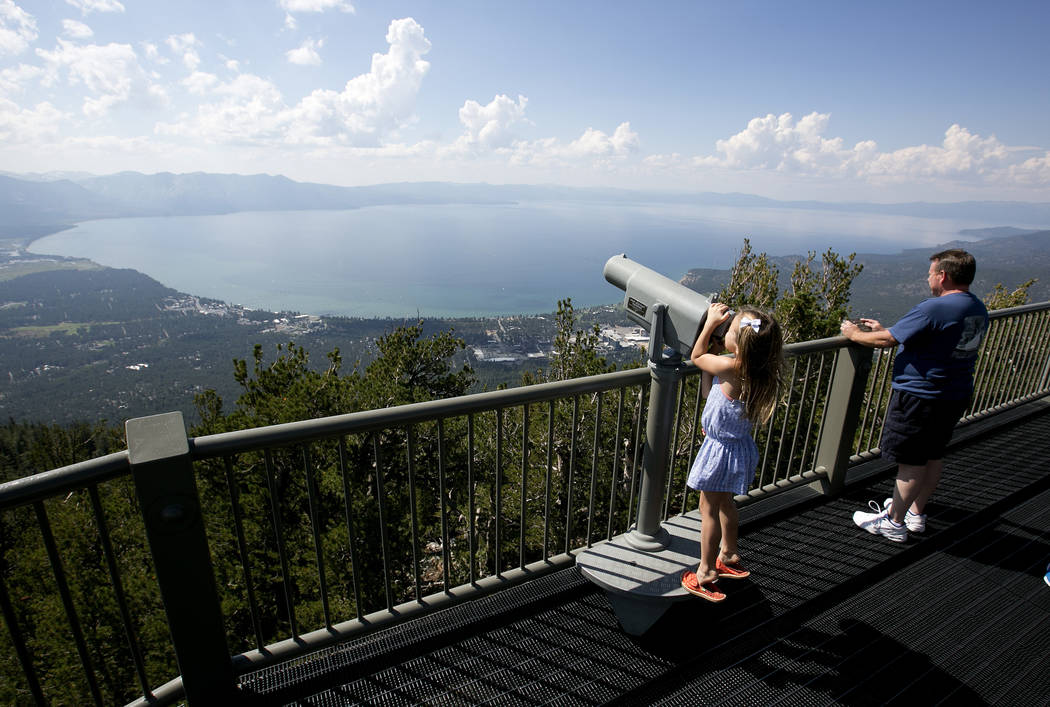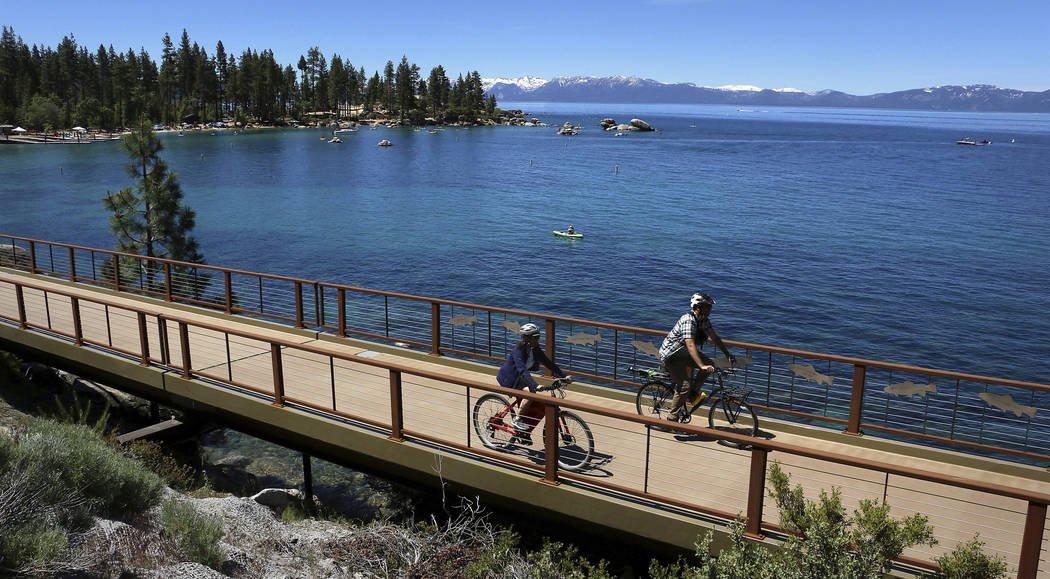Lake Tahoe report: Removing invasive shrimp boosts clarity
RENO — A new report on the progress of efforts to protect Lake Tahoe says removing an invasive shrimp from the alpine waters could offset a decline in clarity while experts grapple with other threats exacerbated by global warming.
Introduced to the lake in the 1960s, Mysis shrimp are driving out native zooplankton that keep the water clear by consuming algae and other small particles.
In recent years, researchers have noticed that removing the shrimp from the lake’s west shore near Emerald Bay resulted in dramatic improvements in clarity. Now they want to expand removal efforts across the lake to help revive water-cleaning zooplankton.
“Lots of things are going to happen here on account of climate change,” said Geoffrey Schladow, director of the Tahoe Environmental Research Center.
“With all those things happening I strongly believe having the native zooplankton will keep the lake clear,” he told the Reno Gazette Journal.
The findings on Mysis shrimp were a bright spot in the center’s annual State of the Lake report that documents progress and setbacks in the effort to preserve the largest alpine lake in North America, which attracts tens of millions of visitors to the Tahoe Basin on the California-Nevada border.
The report forecasts greater challenges based largely on the fact that global warming is driving up temperatures in the basin.
The 2019 report cites recent work by the Tahoe Conservancy suggesting that, depending on the severity of global warming, the average temperature in the basin could increase by about 4 to 9 degrees by 2100. That’s on top of the 4.4-degree rise in the average daily minimum temperature recorded over the last 107 years.
“We’re getting used to that it is on average getting warmer most years, and that is going to keep happening,” Schladow said. “We are trying to do our best to live with it.”
For example, the surface water temperature in Lake Tahoe has been on the rise since at least 1968, when regular measurements began. In 2018, when researchers gathered data for the 2019 report, the average surface temperature was 53.2 degrees Fahrenheit, the second-highest reading to date. In 2018 the lake also marked the highest observed maximum daily surface temperature when it hit 77.5 degrees.
Warmer temperatures have already reduced the percentage of annual precipitation that comes in the form of snow from about 50% 100 years ago to around 30% today, which means warmer water flows into the lake.
Among the ramifications of warmer water is a slowdown in circulation, or mixing, within the lake. The warmer surface means it takes more energy to mix with cooler water below. Less mixing means a greater buildup of nitrates in the water.
Overall clarity increased 10.5 feet to 70.9 feet in 2018, an improvement over years prior but still short of the goal of 97.4 feet. The 2018 improvement was caused by continued improvements in wintertime clarity thanks in large part to efforts by lakeside communities to reduce sediment runoff.


















